Database Editor
You can manage the ToolJet Database directly from the Database Editor. ToolJet Database organizes the data into tables that can have different structures. All the tables will be listed lexicographically on the left. Click on any of the tables to view the table data.

The sidebar on the left can also be collapsed to give more space to the database editor.

Create New Table
To create a new table in ToolJet Database, click on the Create New Table button on the top left corner of the Database editor.

When you click the Create New Table button, a drawer opens from the right, allowing you to enter the details of your new table.
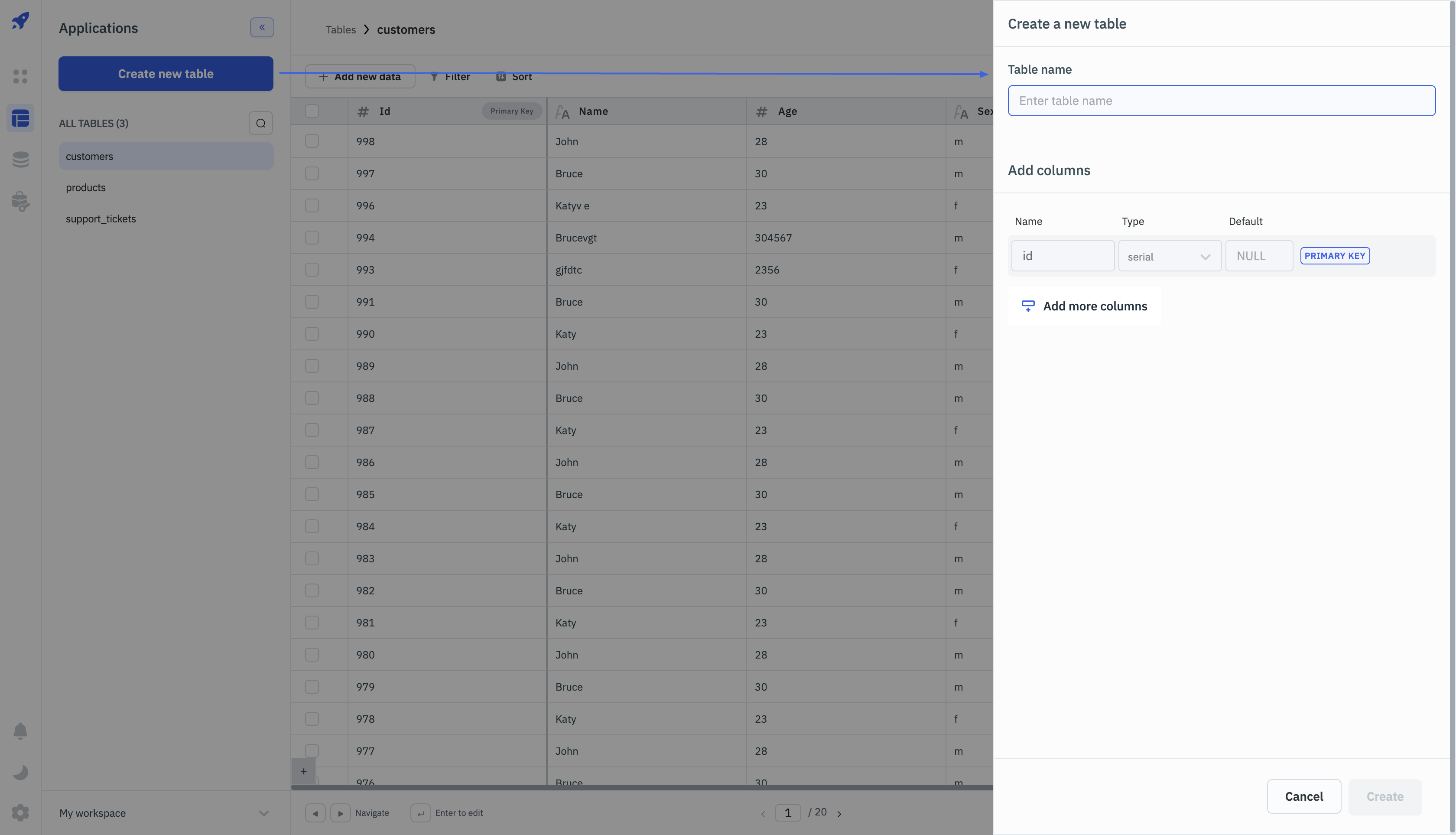
To create a new table, you'll need to:
- Enter a Table name
- Add Columns (
idcolumn withserialdata type is automatically created as the primary key of the table)
Supported Data Types
Data Type | Description | Example |
|---|---|---|
| serial | serial is used to generate a sequence of integers which are often used as the Primary key of a table. Whenever a new table is created in the ToolJet database, a column id with the serial data type is automatically created as the primary key of the table. | Numbers starting from 1, 2, 3, 4, 5, etc. |
| varchar | varchar data type is used to store characters of indefinite length | Any string value |
| int | int is a numeric data type used to store whole numbers, that is, numbers without fractional components. | Numbers ranging from -2147483648 to 2147483647 |
| bigint | bigint is a numeric data type that is used to store whole numbers, that is, numbers without fractional components. | Numbers ranging from -9223372036854775808 to 9223372036854775807 |
| float | float is also a numeric data type that is used to store inexact, variable-precision values. | Any floating-point number, ex: 3.14 |
| boolean | boolean data type can hold true, false, and null values. | true or false |

Search Table
Open the Search bar by clicking on the Search button and search for a table in the ToolJet database by entering the table name.

Rename Table
To rename a table, click on the kebab menu icon on the right of the table name and then select the Rename table option. A drawer will open from the right from where you can edit the table name.

Add New Column
To add a new column on a table, either click on the kebab menu icon on the right of the table name and then select the Add new column option or click on the + button present at the end of the column header.
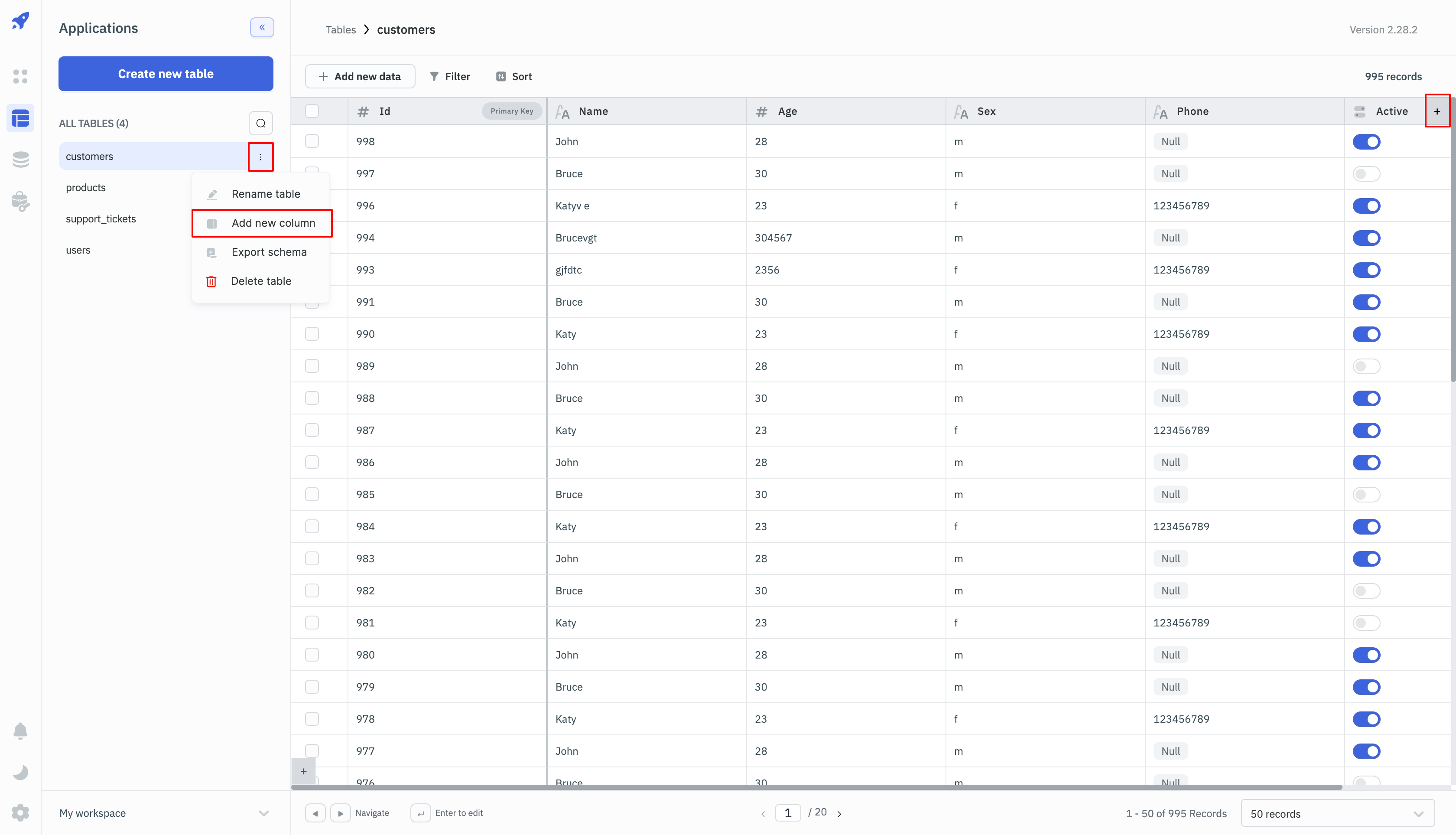
A drawer from the right will open up where you can enter the details for the new column:
- Column Name: Enter a unique name for the new column, serving as its key identifier.
- Data Type: Choose the appropriate data type for the column from the available options.
- Default Value: Specify any default value that should be assigned to the column. Optionally, users can leave this field blank. When a table contains rows and NOT NULL is applied to one of its existing or new columns, specifying a default value becomes compulsory.
- NULL/NOT NULL: Use the switch to determine whether the column should allow NULL values or not. By default, the toggle is off, allowing the column to have blank or empty entries. If you turn it on, the column is set to NOT NULL, meaning it can't have blank or empty entries anymore. But, for text columns, even with NOT NULL on, they can still have empty text (like an empty line) but not completely blank entries
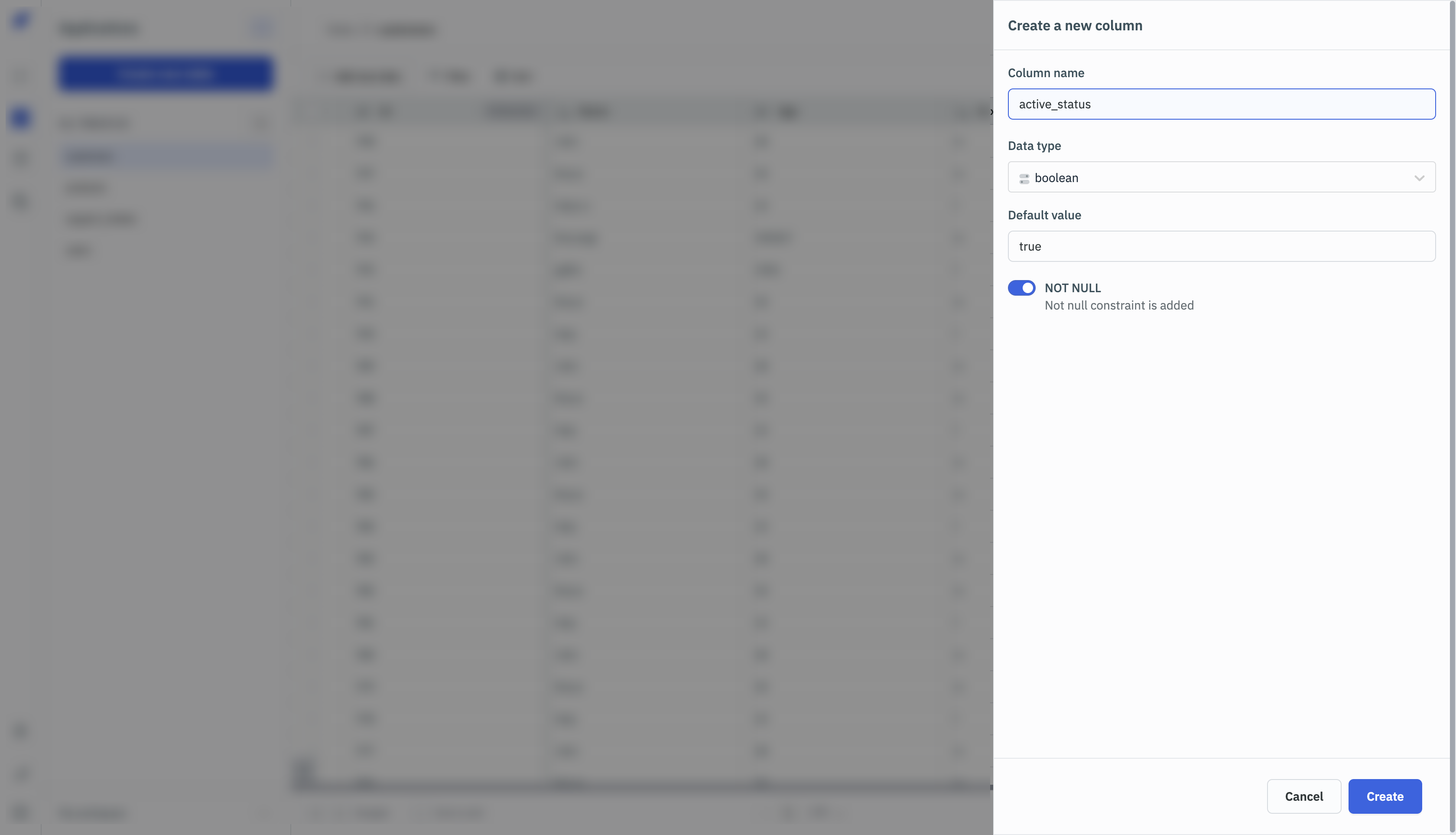
Export Schema
The export schema option allows you to download the selected table schema in a JSON file. This does not export the table data.
While exporting the app, you can choose to export the app with or without table schema connected to the app.
To export the table schema, click on the three vertical dots icon on the right of the table name and then click on the Export option. A JSON file will be downloaded with the table schema.

Delete Table
To delete a table, click on the three vertical dots icon on the right of the table name and then click on the Delete option. A confirmation modal will appear, click on the Delete button to delete the table.

Edit Column
To edit a column, click on the kebab menu on the column name and select the option to Edit column. When you edit the column, the data type cannot be changed.
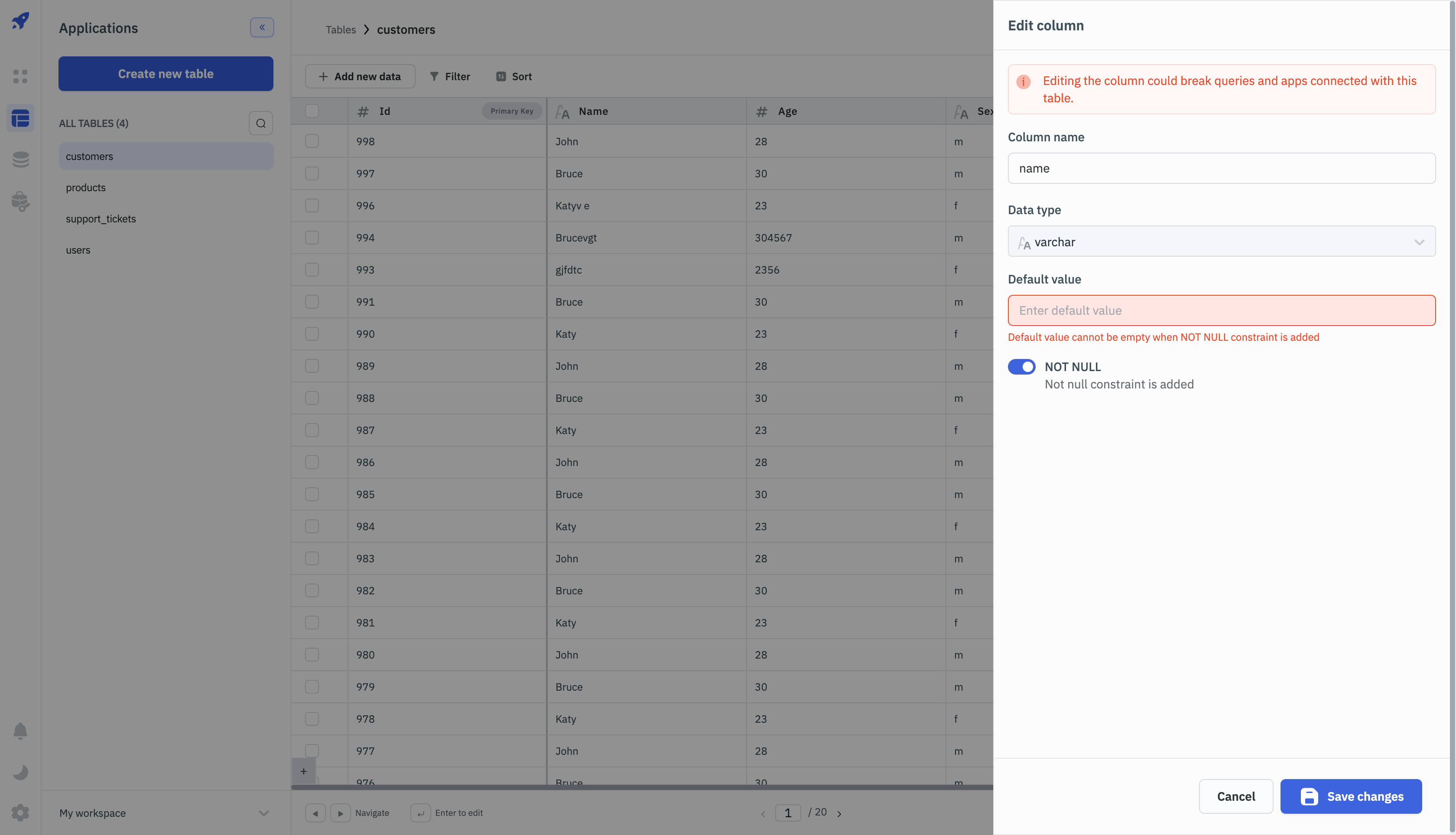
Delete Column
To delete a column, click on the kebab menu on the column name and select the option to Delete.
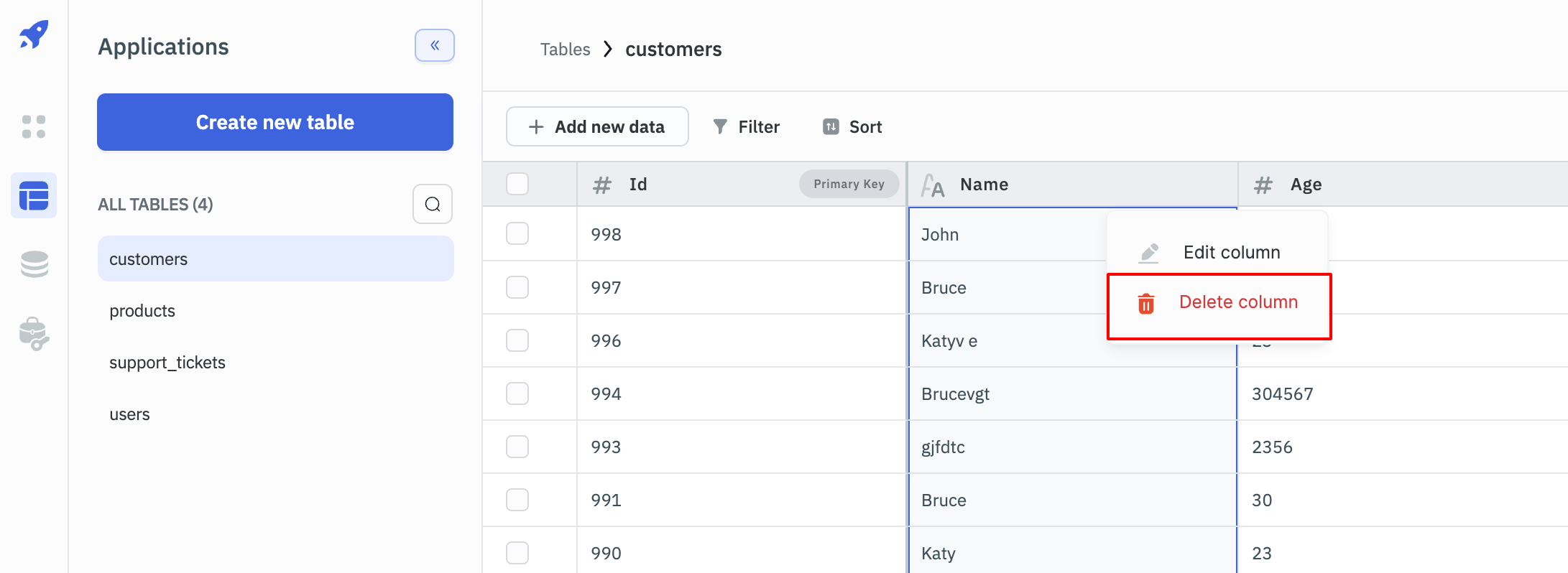
Add New Data
The Add new data button on the top of the table editor allows you to add data to the table. You can either Add new row or Bulk upload data to add the data to the table.
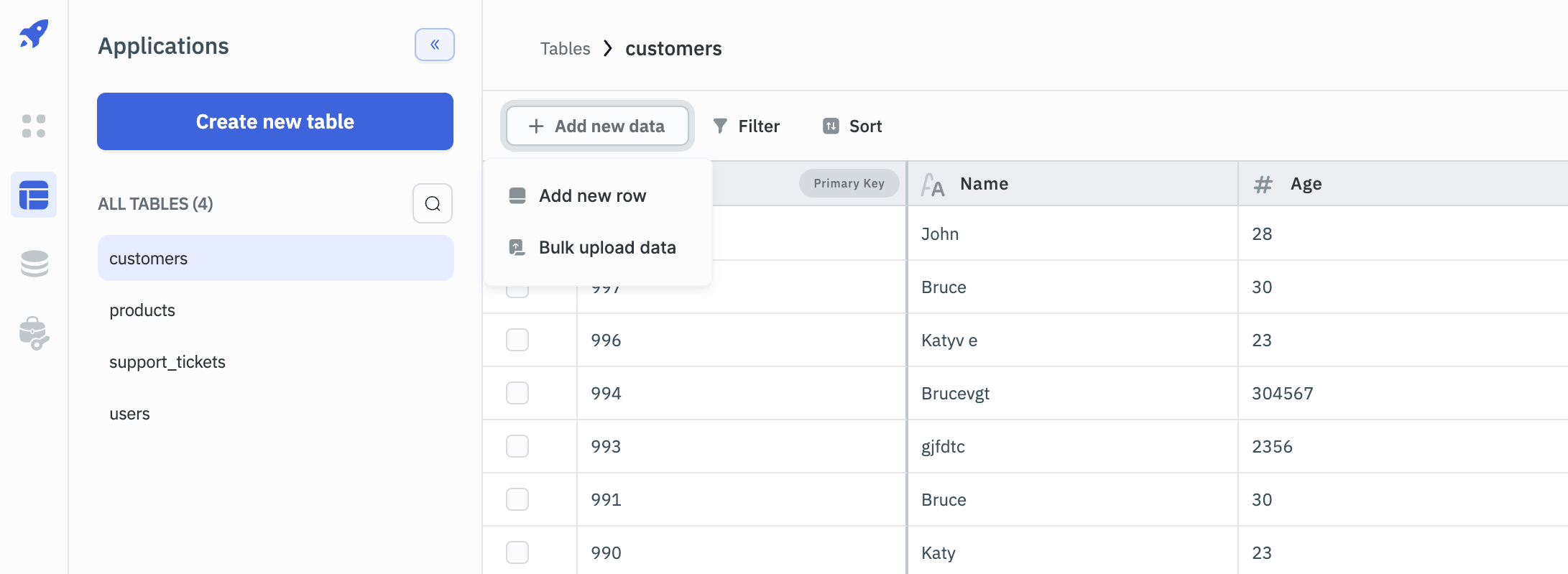
Add New Row
To add a new row on a table, either click on the Add new data button on top and then select the Add new row option or click on the + button present at the bottom left.
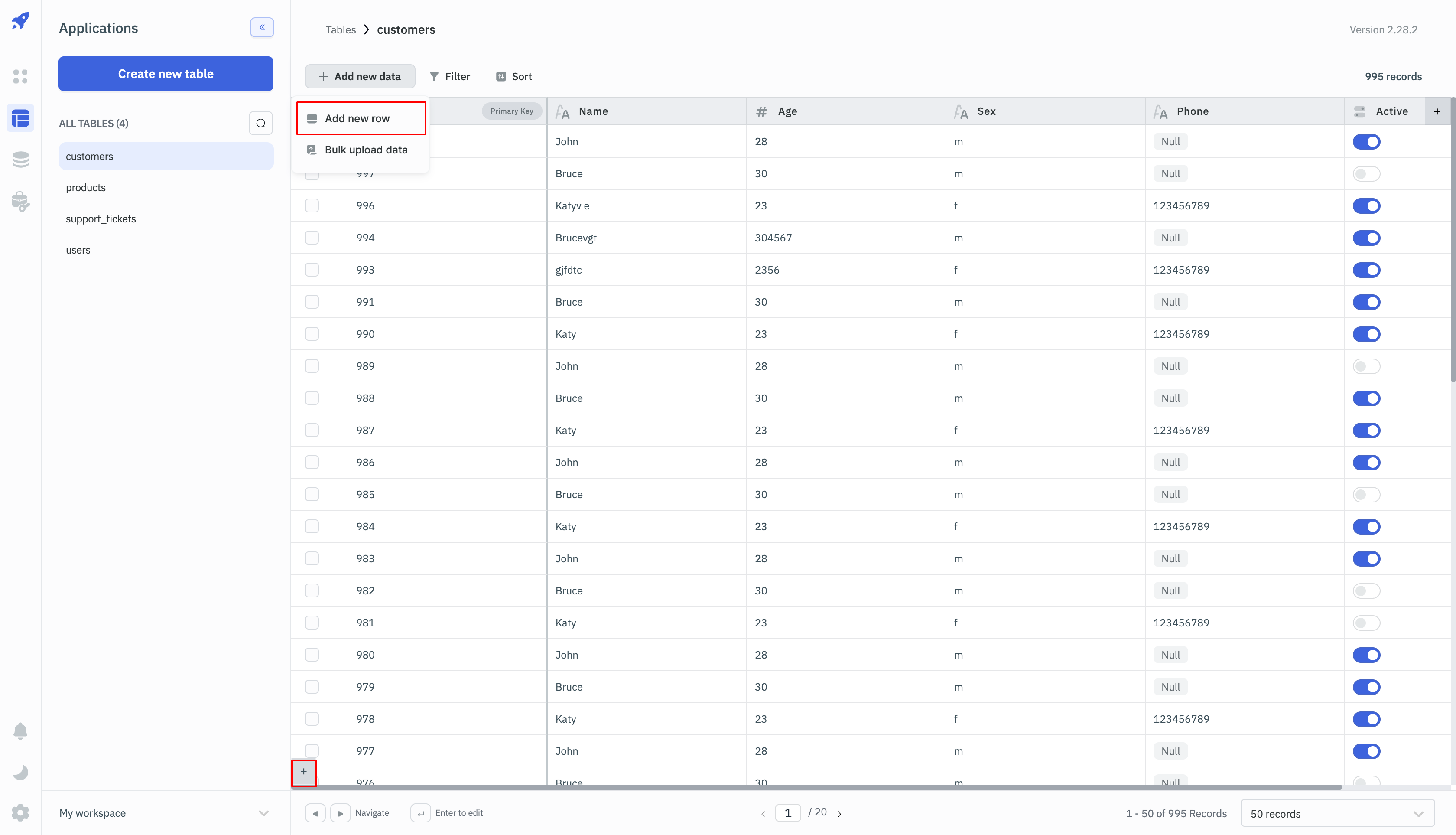
A drawer from the right will open up where the values for the new row can be provided.

Edit Row
To edit a row, hover on the row that you want to edit and the expand icon will appear next to the checkbox of that row. Click on the Expand icon to open the drawer and edit the row.

Edit a Cell
- Double-Click: Double-click on the cell you want to edit.
- Enter Value: Input the new value.
- Save Changes: Press "Enter" to save the changes. For boolean-type columns, choose from "True," "False," or "Null" options.
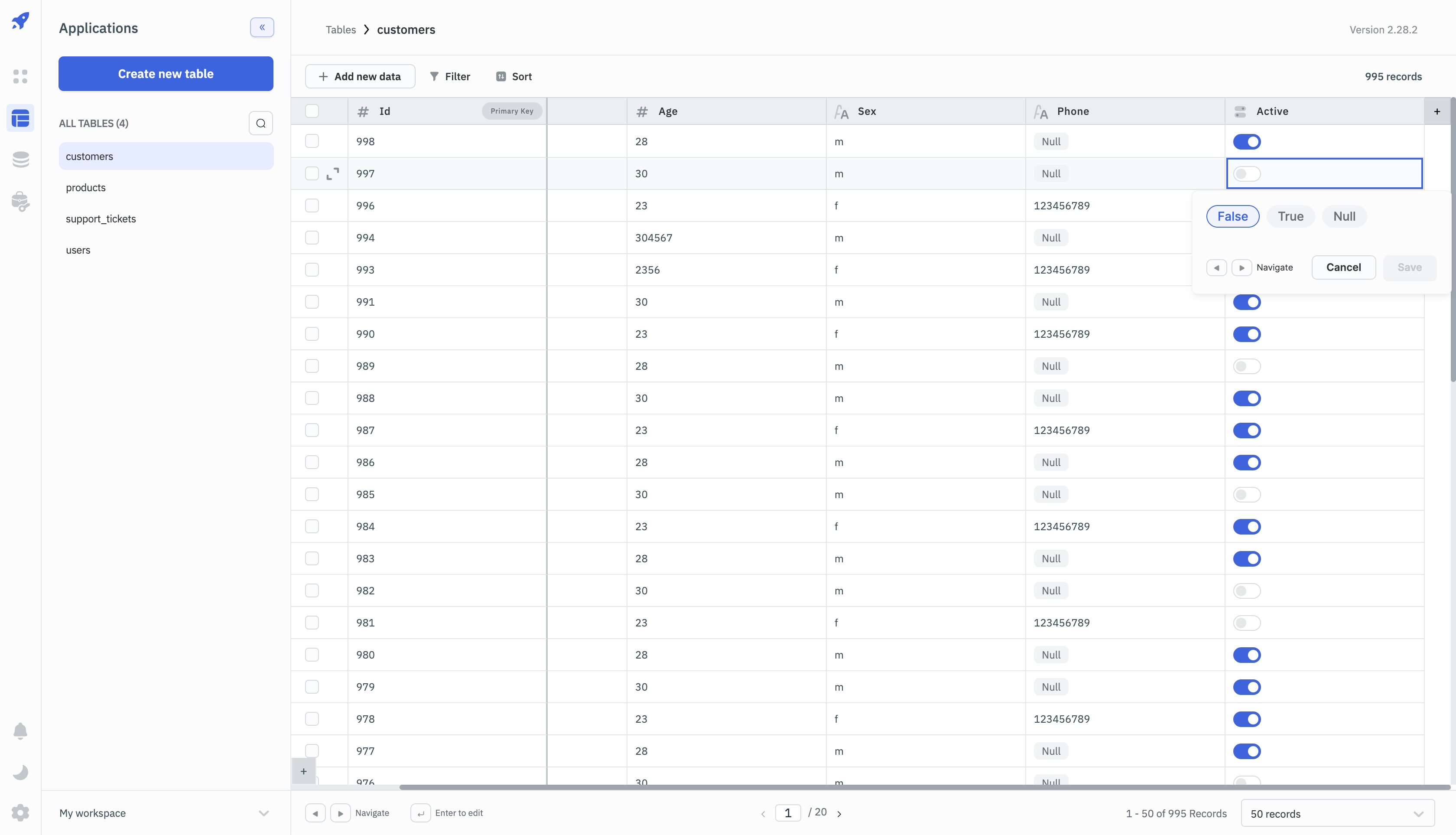
Bulk Upload Data
You can bulk upload data to the ToolJet database by clicking the Bulk upload data button at the top of the database editor. On clicking the button, a drawer will open from the right from where you can upload a CSV file. This file is used to upsert records onto the table. If data for the id column is missing, it will insert a new record with the row data; if the id is present, it will update the corresponding record with the row data.
From the drawer, users can download the template CSV file in which they can enter the data to be uploaded to the ToolJet database's table or format their CSV file in the same way as the template file.
Once the CSV file is ready, click on the file picker to select the file or drag and drop the file in the file picker. Now, click on the Upload data button to upload the data to the ToolJet database.
Requirements:
- The data types of columns in the CSV file should match those in the ToolJet database table.
- The
idcolumn with aserialdata type should not contain duplicate values.
Limitations:
- There is a limit of 1000 rows per CSV file that can be uploaded to the ToolJet database.
- The CSV file should not exceed 2MB in size.

Delete Records
To delete one or many records/rows, click the checkbox to the right of the record or records you want to delete. As soon as you select a single record, the button to delete record will appear on the top, click on the Delete record button to delete the selected records.

Filter
You can add as many filter as you want into the table by clicking on the Filter button present on the top of the database editor.
Adding a filter on the table data
- Select a column from the Columns dropdown
- Choose an operation
- Enter a value for the selected operation
Available operations are:
- equals: This operation is used to check if the value of the column is equal to the value entered in the input field.
- greater than: This operation is used to check if the value of the column is greater than the value entered in the input field.
- greater than or equal: This operation is used to check if the value of the column is greater than or equal to the value entered in the input field.
- less than: This operation is used to check if the value of the column is less than the value entered in the input field.
- less than or equal: This operation is used to check if the value of the column is less than or equal to the value entered in the input field.
- not equal: This operation is used to check if the value of the column is not equal to the value entered in the input field.
- like: This operation is used to check if the value of the column is like the value entered in the input field. This operation is case-sensitive. ex:
ToolJetwill not matchtooljet - ilike: This operation is used to check if the value of the column is like the value entered in the input field. This operation is case-insensitive. ex:
ToolJetwill matchtooljet - match: This operation is used to check if the value of the column is like the value entered in the input field. This operation is case-sensitive. ex:
ToolJetwill not matchtooljet. This operation uses regular expressions. ex:^ToolJet$will matchToolJetbut notToolJet Inc. - imatch: This operation is used to check if the value of the column is like the value entered in the input field. This operation is case-insensitive. This operation uses regular expressions. ex:
^ToolJet$will matchToolJetbut notToolJet Inc. - in: This operation is used to check if the value of the column is in the list of values entered in the input field. ex:
1,2,3 - contains: This operation is used to check if the value of the column contains the value entered in the input field. This operation is case-sensitive. ex:
ToolJetwill not matchtooljet - contained: This operation is used to check if the value of the column is contained in the value entered in the input field. This operation is case-sensitive. ex:
ToolJetwill not matchtooljet - not: This operation is used to negate the result of the operation selected in the dropdown. ex:
not equalswill return all the records where the value of the column is not equal to the value entered in the input field.

Sort
To sort the table data, click on the Sort button on top, select a column from the dropdown, and then choose an order ascending or descending.
